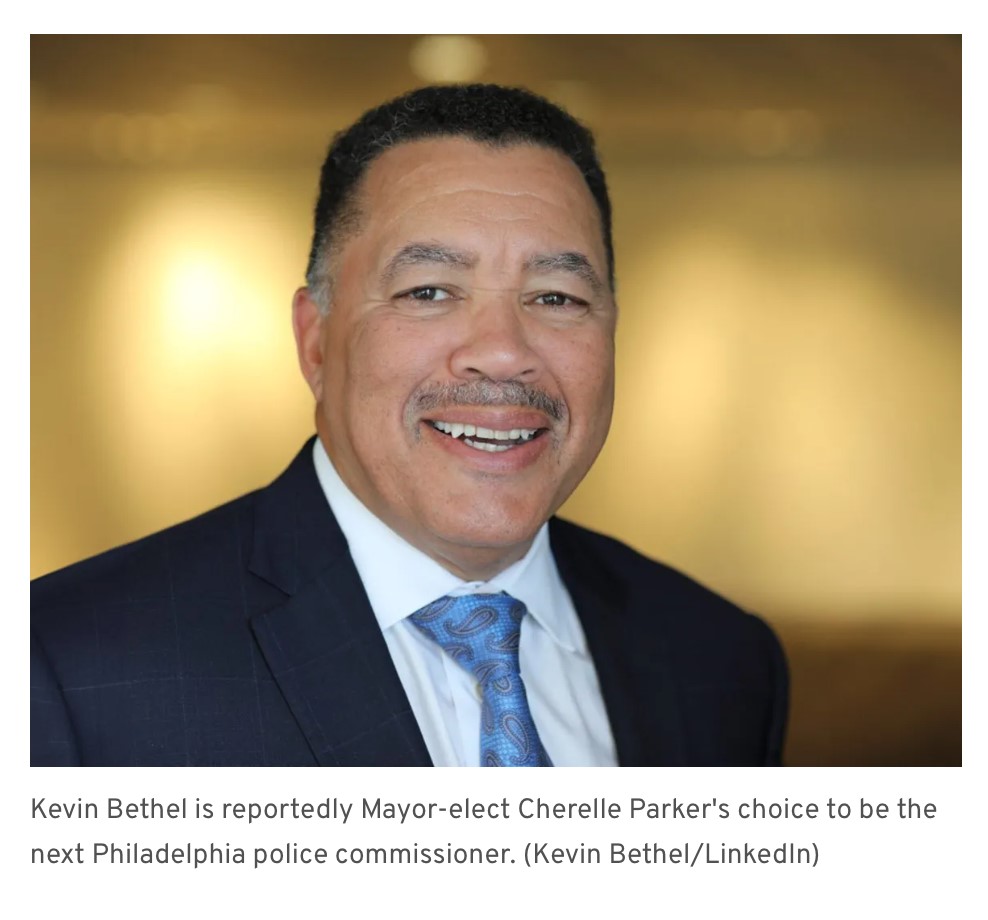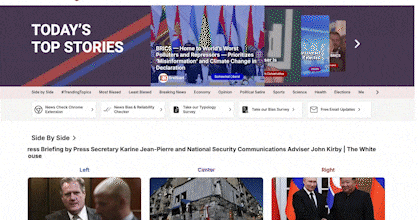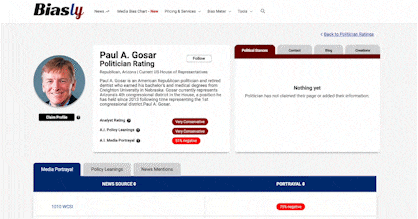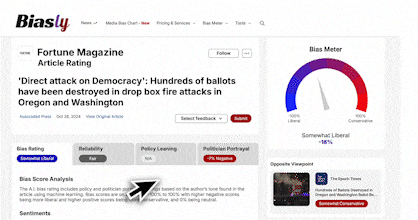
Billy Penn was founded in 2014 and is owned by its parent company WHYY, Inc. The news source has continued to deliver original political opinions, cultural and relevant news in Philadelphia, Pennsylvania where it’s headquartered. Billy Penn can be found online at billypenn.com.
Billy Penn seeks to give the people of Philadelphia fast and pertinent news coverage. Numerous subjects are covered, such as regional politics, current affairs, culture, and way of life. In its reporting, the news organization frequently uses an approachable and conversational tone. It also interacts with its audience and disseminates material on social media channels in addition to traditional news stories. It is a component of the larger field of digital news media, which aims to adjust to the shifting tastes and consumption patterns of its audience.
Pew Research breaks down the political ideologies of adults in the Philadelphia metro area below, citing that the area leans left.

Source: Pew Research
With this in mind, the article will analyze the source’s coverage and editorial decisions and determine whether or not Billy Penn has discernible political bias in their reporting. Our thought-provoking analysis will provide an answer as to whether or not Billy Penn is biased while shedding light on additional factors that contribute to media bias.
How Does Biasly Rate News Sources?
Biasly’s algorithms produce bias ratings to help provide multiple perspectives on given articles. Biasly has analyzed 200,000+ news articles from more than 3,200 news sources through our A.I. technology and team of political analysts to find the most factual, unbiased news stories.
Biasly determines the degree of political bias in news sources by using Biasly’s Bias Meter Rating, in which Biasly’s team analyzes media sources’ reliability and bias and produces three scores, a Reliability Score that measures the accuracy of media sources; an A.I. Bias Score, evaluated by A.I.; and an Analyst Bias Score evaluated by political analysts. These scores are rated based on seven rating metrics including Tone, Tendency, Diction, Author Check, Selection/Omission, Expediency Bias, and Accuracy. These metrics help our analysts to determine the political attitude of the article.
Our A.I. machine-learning system employs natural language processing and entity-specific sentiment analysis to examine individual articles and determine their bias levels. By analyzing the key terms in an article such as policies, bias phrases, political terminologies, politicians, and their nicknames, the algorithms can rate the attitude of the text. Bias scores range from -100% and 100%, with higher negative scores being more liberal and higher positive scores being more conservative, and 0% being neutral.
Is Billy Penn Politically Biased?
Biasly’s rating for Billy Penn is based on its computer algorithms which are based on A.I. Biasly rated the Billy Penn with a Computer bias score of Center-Left, which means, overall, it provides political coverage from a neutral perspective and not explicitly liberal nor conservative-leaning. Analyst scores are expected to come soon. They are based on an average of at least 15 articles with each being reviewed by one liberal, moderate, and conservative analyst. The more articles rated by Bialsy’s analyst team for a particular source indicates a more accurate analyst score. As Biasly rates more articles, the scores will become more accurate. Covering news from both sides of the political spectrum and its non-judgemental attitude on a particular party contribute to this rating. Biasly’s scores closely align with determinations by other third-party bias research agencies.
Readers like you are more likely to find the articles on Billy Penn with a slightly left standpoint, as represented by Biasly’s “Center-Left” rating. In the remainder of this article, we’ll talk about ways to identify this bias so you can separate the opinions from the facts and become a more informed consumer of news.
Before we begin, we need to discuss bias. Bias is a natural function of humans, and we can express it both consciously and unconsciously. Bias is one of the most fundamental forms of pattern recognition in humans. This isn’t to lower the bar and say that “all things are biased,” but to explain the process in which we may come to trust certain news organizations that display patterns of coverage.
On the media’s part, there is an incentive to retain audiences, encourage them to purchase subscriptions, and rate products positively. Bias is a two-way street, people want to see news stories about things they care about, and the media needs viewers to continue their operations. This creates a positive feedback loop that influences what stories are covered and from what perspective. This also explains the actions of more liberal news organizations.
Analysis of Bias in Billy Penn Online Articles
When determining bias, some of the most common metrics used include Tone, Tendency, Author, Diction and Expedency Bias, which are the primary metrics we’ll focus on below.
- Tone: This represents the attitude of the writing, formed distinctively but related to the author’s word choices or diction.
- Diction: The specific words chosen by the writer.
- Author: A metric related to the article’s author, taking into account their history of stance on issues based on past articles and social media posts.
- Tendency measures how consistently an author shows bias in their work, including factors like their tone and perspective.
- Expediency Bias relates to the immediate impression created by elements like the article’s headline, images, or summary, indicating if they favor a particular viewpoint.

Source: Billy Penn
For example, the photo in this article shows a smiling and passionate Keven Bethel, who is the Mayor-elect’s choice for Philadelphia’s police commissioner. This image displays expediency bias in that readers can evoke positive sentiments towards Bethel due to his smiling portrait. Recall that Billy Penn’s articles are rated as Center-Left, therefore this may show some slight leaning. Nonetheless, there is an immediate expression created by elements such as the image and summary of the article.
The first article we’ll examine is entitled “Reports of the Philly GOP’s death have been greatly exaggerated, political observers say” Biasly has rated this article as Somewhat Liberal on the Bias Meter. Part of the reason for this rating is that, even though the author tries to maintain neutrality, the tone suggests that he held a moderately negative attitude towards the incidents reported in the article.
The article opens with a somewhat dismissive tone toward the Philadelphia GOP’s recent electoral losses, framing them as exaggerated reports of the party’s demise. The use of the word “supposed” when referring to the death of the party suggests a degree of skepticism and downplays the significance of the election results.
The inclusion of the term “progressive Working Families Party” implies a positive characterization of the WFP, aligning with liberal values. Additionally, the article emphasizes the GOP’s reduced representation in the City Council, framing it as a notable event in modern history.
The article acknowledges individual Republican achievements, such as David Oh’s performance, but it juxtaposes these against the overall narrative of the party’s decline, suggesting a more critical perspective. The focus on the GOP’s struggle in a city with a 7-to-1 Democratic voter registration advantage adds to the narrative of an uphill battle for the Republicans, aligning with liberal viewpoints on urban politics.
Quotes from political observers in the article, such as Neil Oxman, suggest a critical perspective on the GOP’s performance and imply that with more attention and organization, the party could have fared better. The emphasis on the absence of straight-ticket voting as a factor that may have disadvantaged Republicans aligns with liberal concerns over voting reforms.
The article further suggests a moderately liberal stance by discussing the importance of mail-in voting and quoting a Republican candidate’s positive stance on it. The emphasis on the potential impact of mail ballots and the discussion around the absence of straight-ticket voting echoes liberal viewpoints on voting accessibility and reform.
Overall, the article’s tone, choice of language, and focus on certain aspects of the GOP’s performance contribute to a narrative that leans moderately liberal. While it does not outright reject the GOP, it suggests a critical perspective on the party’s challenges and highlights elements that align with liberal values. Therefore, we can also denote slight omission bias given the selectively gathered quotes and critical nature towards the GOP.
Another example from an article on Billy Penn, entitled “Will the rift between Philly Democrats blow over as 2024 approaches,” the Bias Meter gives this article a rating of -10%, or “Center-Left.” It maintains a center position by presenting various perspectives without overtly favoring one side over the other too much.
The article provides a platform for both progressive Democrats who feel alienated and concerned about sanctions and for the Democratic Party establishment led by Bob Brady. It includes quotes from individuals on both sides of the rift, giving readers a comprehensive view of the situation. It also reflects the concerns of both progressive Democrats who faced consequences for supporting Working Families Party candidates and the Democratic Party establishment led by Bob Brady. This dual perspective contributes to a balanced portrayal of the intra-party tensions.
The article explains the party rules and changes that have occurred, including the recent rule change allowing unilateral dismissals by ward leaders. By providing this information, the article helps readers understand the context and the mechanisms at play without explicitly taking a stance. The inclusion of quotes from individuals such as Kate Rivera, a committee person expelled for supporting the Working Families Party, and Bob Brady, head of the Democratic City Committee, ensures that the viewpoints of both factions are represented in the article.
The article concludes with statements from various individuals, including Maggie Hart, emphasizing the need for collaboration and expressing a desire to be on the same team. This emphasis on finding common ground contributes to the centrist tone, promoting unity rather than division. While discussing the rift, the article acknowledges the unprecedented success of the Working Families Party in claiming Council’s two at-large seats. This recognition of achievements from both sides contributes to a fair and balanced representation.
Overall, the two articles on Billy Penn exemplify its slightly left rating by the Bias Meter. Although some of its articles, such as the one discussed above, can have moderately liberal-leaning perspectives, it nevertheless qualifies as one of the unbiased news outlets. Readers are unlikely to foster a negative attitude toward a specific party for the article’s biased portrayal of it.
Who Owns Billy Penn?
Billy Penn joined WHYY, a public radio station licensed to serve Philadelphia, in 2019. WHYY was founded in 1954 and is owned by WHYY, Inc.
It is the top public media company in the Philadelphia region, which reports local news, arts, and events. Billy Penn joined WHYY in consideration of its stability; however, its website affirmed to its readers that it will continue to be member-supported, as being owned by WHYY simply means more stability.
How to Evaluate and Uncover Bias
It can often be difficult to tell if the news you watch is biased. If you have settled on a news channel, it’s usually because you trust the information you are gaining. Unfortunately, many trust the information they are hearing because it confirms what they already believe. This is referred to as “confirmation bias.” It is important to challenge your beliefs and get third-party verification that what you are hearing is the full story. This is why we recommend using Biasly to compare different news stories side-by-side using our bias ratings to figure out what both sides think of a political issue.
Even though Billy Penn is not known to the public as well as the large, mainstream news outlets, it can actually qualify as an unbiased, impartial news outlet that delivers perspective-free coverage. Consequently, readers are unlikely to suffer from biased news and foster an inaccurate and partial understanding of any political party. While the articles on Billy Penn occasionally display hints of liberal bias, the bias meter shows that it is free from major bias. And while every article you read will be biased to some degree, some stick to the facts better than others, which is why it’s so important to use Biasly’s news on its home page to help you determine the bias of what you read.

























